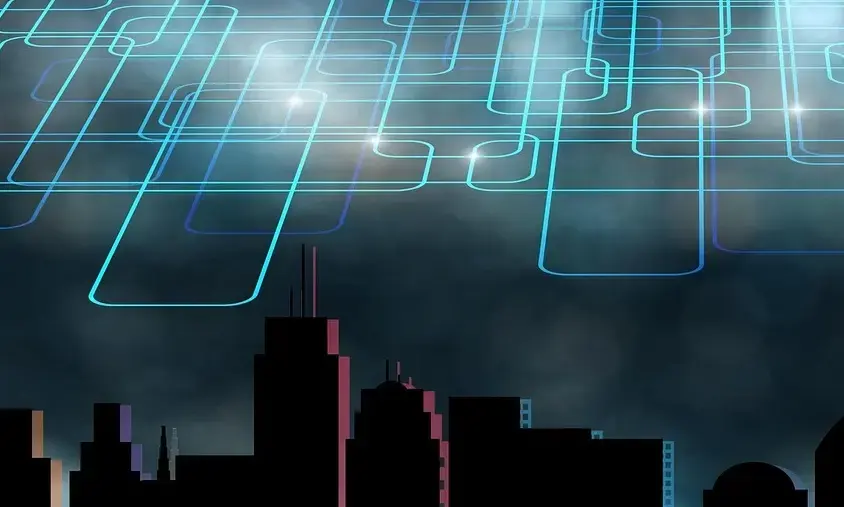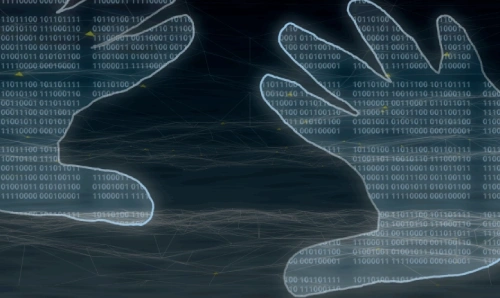Organizations need long-term data storage solutions for large datasets, archival purposes, and business-critical backups. This data is typically written once but rarely read or modified.
Physical storage media are particularly suitable for this specific need - even if they cannot compete with SSDs or cloud solutions in terms of read and write speeds. Long-term archiving is not primarily about fast availability, but about maximum data security and integrity over many years.
Comparison of the most important Storage Solutions for Backup and Archiving
With Ancel Security, we have deliberately chosen storage media that offer the best combination of durability and cost-efficiency in 2025.
Below, we present a range of solutions to help you make the best decision for your specific use cases.
BDXL Discs (Blu-Ray XL)
Long-term Optical Storage for smaller Amounts of Data
Technical characteristics:
- Capacity: Up to 128 GB (quad-layer BDXL); typically, 100 GB (triple-layer).
- Read/write speed: Typically, 4x to 12x (~18–54 MB/s).
- Technology: Optical disc; uses blue-violet laser (405 nm wavelength).
- Format-Type: Write-once (BD-R XL) or rewritable (BD-RE XL).
Durability:
- Nominal service life: ~30-50 years when stored properly.
- Vulnerability: Susceptible to damage from heat, moisture, and light. Scratches or physical damage can compromise data integrity.
Hardware requirements:
- Drive: Requires a BDXL-compatible Blu-ray drive.
- Compatibility: Not all Blu-ray drives support BDXL; check the drive’s technical specifications specifically for “BDXL.”
- Interface: The connection is usually made via USB or SATA (internal drives).
Quantum LTO-8 tapes
Magnetic Tape for large, offline-capable Backups
Technical characteristics:
- Capacity: Native - 12 TB; Compressed - Up to 30 TB (compression ratio 2.5:1)
- Read/write speed: Native - Up to 360 MB/s; Compressed - Up to 900 MB/s
- Technology: Magnetic tape cartridge; Linear Tape-Open (LTO) standard, 8th generation.
- Encryption: AES 256-bit hardware encryption is supported.
Durability:
- Nominal service life: Up to 30 years for storage, 250+ complete file cycles for use.
- Durability: Very robust in archiving environments, but susceptible to magnetic fields and extreme environmental influences.
Hardware requirements:
- Drive: LTO-8 drive (compatible with LTO-7 for reading/writing and LTO-6 for reading).
- Interface: Usually SAS (Serial Attached SCSI), which means that a special host bus adapter (HBA) is required.
- Software: Backup/archiving software is often required (e.g., Veeam, Retrospect, LTFS for drag-and-drop functionality).
Cold Storage HDDs
An Affordable Option with Mechanical Risks
Technical characteristics:
- Capacity: 10 TB to 24 TB (or more with newer helium-filled drives).
- Interface: SATA (for consumers/internal) or USB (for external).
- Read/write speed: 150–250 MB/s continuous read/write speed.
- Format-Type: 3.5-inch desktop or external enclosure.
Durability:
- Active use: Typical warranty of 3–5 years.
- Cold/offline storage: Up to ~10 years when stored in a temperature- and humidity-controlled environment without power supply.
- Failure mode: Mechanical (motor failure, or a so-called head crash, where the read/write head touches the magnetic disk and damages the surface of the data carrier, etc.).
Hardware requirements:
- Connection: SATA connection or USB 3.0+ enclosure.
- Operating system compatibility: Universal (Windows, Linux, macOS).
Cloud Archiving
Scalable, Maintenance-free Storage Solution
Technical characteristics:
- Capacity: Virtually unlimited.
- Access levels: Standard archive - retrieval within minutes to hours; Deep archive - Up to 12 hours.
- Data redundancy: Distribution and replication across multiple geographically separate locations with checksum validation.
Durability:
- Managed by the provider: Contractually agreed guaranteed longevity (e.g., Amazon S3 Glacier: 99.999999999% data durability).
- No direct physical risk: Protected from environmental damage or local disasters.
Hardware requirements:
- None (Cloud-native).
- Access: API, SDK, or browser-based console.
- Software: Backup/archiving solutions (e.g., Veeam, CommVault) may be required for use in companies.
M-DISC
Robust Medium for particularly long-lasting Data Archiving
Technical characteristics:
- Capacity: 25 GB (DVD), 100 GB (Blu-ray XL).
- Format: Write-once optical disc with inorganic recording layer.
- Read/write speed: Slower than standard Blu-ray (~4x typical).
Durability:
- Estimated: Up to 1,000 years.
- Tested: Environmental testing by the US Department of Defense under extreme conditions.
- Use case: Archiving of critical data (legal, official, genealogical data).
Hardware requirements:
- Writing drive: M-DISC-compatible drive (e.g., LG WH16NS40).
- Read drive: Any Blu-ray drive for playback (read-only).
- No additional software is required apart from a burning program (e.g. ImgBurn, Nero).
SSD-based Archiving
Fast Access with limited Durability
Technical characteristics:
- Capacity: 1 TB to 16 TB (consumer), up to 32 TB (enterprise).
- Interface: SATA, NVMe (PCIe), USB (for external devices).
- Read/write speed: Very high – up to 3,000 MB/s (NVMe).
Durability:
- Active use: 5–10 years, depending on the write cycles (TBW rating).
- Cold storage: Data retention without power supply can drop to 1–2 years (especially at high temperatures).
- Risk: Data loss due to charge leakage in NAND cells.
Hardware requirements:
- Interfaces: SATA or NVMe connection or USB-C/A for external drives.
- File system management: Regular integrity checks (e.g., checksum verification).
A Comparison at a Glance
To enable a more direct comparison of the storage solutions presented, we have summarized the most important features in an overview table. It is intended to serve as a decision-making aid for typical business scenarios.
| Solution | Capacity | Speed (read/write) | Durability | Hardware Requirements | Special Features |
|---|---|---|---|---|---|
| BDXL Discs | Up to 128 | GB 18–54 MB/s | 30–50 years | BDXL-compatible Blu-ray drive | Affordable, portable, sensitive to the environment |
| Quantum LTO-8 Tape | 12 TB (native); 30 TB (compressed) | Up to 360/900 MB/s | Up to 30 years | LTO-8 drive + SAS + software | High capacity, ideal for corporate archives |
| Cold storage HDDs | 10–24+ TB | 150–250 MB/s | Up to 10 years | SATA/USB port | Simple, inexpensive, mechanical failure risks |
| Cloud archiving | Unlimited | Slow (min. to hour) | Very high (guaranteed by provider) | None – Cloud-based | Scalable, no maintenance, running costs |
| M-DISC | 25–100 GB | Slow (~4x) | Up to 1,000 years | M-DISC-compatible burner + Blu-ray reader | Extremely durable, ideal for critical data |
| SSD-based archiving | 1–32 TB | Very high (up to 3000 MB/s) | 1–10 years | SATA, NVMe, USB | Very fast, limited offline durability |
Future Technology for long-term Backups
Other long-term data storage solutions besides those presented here are currently under development. I would like to mention two of them here, as they are very promising for the future of secure backups and long-term archiving.
DNA Data Storage
Molecular Archiving with Millennia-long Durability
Technical characteristics:
- Storage density: Theoretically ~215 petabytes per gram of DNA – far more than any conventional storage medium.
- Encoding method: Digital data is converted into sequences of the four DNA bases (A, T, C, G) and then chemically synthesized.
- Decoding method: The data is retrieved by sequencing the DNA and decoding the base sequences back into binary data.
- Redundancy/error correction: Uses special error correction codes (e.g., Reed-Solomon, Fountain codes) to correct synthesis/sequencing errors.
- Access type: Direct access is technically possible, but currently slow and expensive—unlike conventional hard drives or tape drives.
Durability:
- Estimated lifespan: Thousands to tens of thousands of years if stored under optimal conditions (cool, dry, dark – similar to the preservation of ancient DNA).
- Natural evidence: Intact DNA has been extracted from fossils over 10,000 years old, indicating excellent stability.
- Risks of degradation: DNA is sensitive to UV light, heat, moisture, and enzymatic contamination, but when encapsulated (e.g., in silicon dioxide), it can remain stable for thousands of years.
Hardware requirements:
- Writing: Requires DNA synthesis technology, which is currently performed in specialized biotech laboratories. Not suitable for consumers; expensive and time-consuming.
- Reading: Requires next-generation sequencing (NGS) platforms such as Illumina, Oxford Nanopore, or PacBio.
- Bioinformatics tools: Complex bioinformatics pipelines are required to compile, align, and decode sequenced data.
- Current limitations: Not suitable for live access storage. Processing time can range from hours to days, and costs are still in the thousands of dollars per megabyte.
Optical archiving systems
Enterprise discs for permanent digital archiving
Technical characteristics:
- Capacity: 300 GB to 1.5 TB per disc (multiple layers).
- Technology: Professional optical disc system.
- Reading/writing process: Phase change recording with special hardware.
Durability:
- Specified: Up to 100 years.
- Use case: Used by broadcasting, government, or long-term archives for digital archiving.
Hardware requirements:
- Drive: Special optical archive drives (not commercially available drives).
- Format: Requires a compatible reader from the same manufacturer.
- Software: Archiving tools provided by the manufacturer (indexing, search, etc.).
Conclusion: Hybrid backup strategies are the best solution for maximum data security and longevity in 2025.
Choosing the right long-term data storage solution is crucial for a sustainable and resilient IT strategy. While cloud solutions offer maximum scalability and availability, physical data carriers such as BDXL discs and LTO-8 tapes offer offline protection and independence from third parties – especially in ransomware scenarios.
Ancel Security combines the best of both worlds:
Our hybrid backup architecture uses certified cloud storage for fast recovery and physically separated, air-gapped storage media (either BDXL or LTO-8), which are outsourced via secure shipping. The result is a backup system that’s not only technically robust, but also resilient against targeted ransomware attacks – even in the event of compromised networks.
The storage technologies shown in the comparison table above demonstrate that there is no universal solution:
- Cloud archiving is suitable for companies with high scaling requirements and global data access.
- LTO-8 tapes are ideal for large backup volumes with offline protection.
- M-DISC is recommended for particularly long-term archiving of legally relevant data.
Secure your data with foresight. Let’s build a future-proof backup strategy that stands strong against evolving threats.
This article was supported by the AI application ChatGPT by OpenAI – especially for research, content structuring, and drafting some sections. All content was reviewed, adapted, and contextually framed by the author.
AI is used here as an editorial tool to present complex topics clearly and efficiently. Full creative and content responsibility remains with the author.



